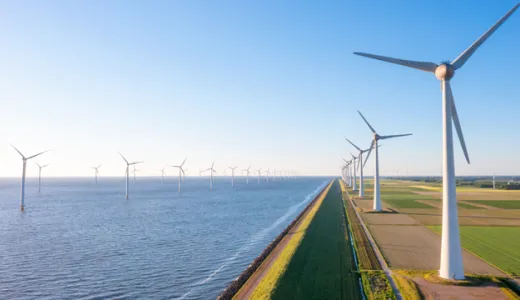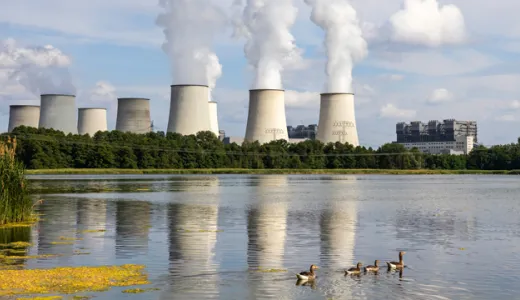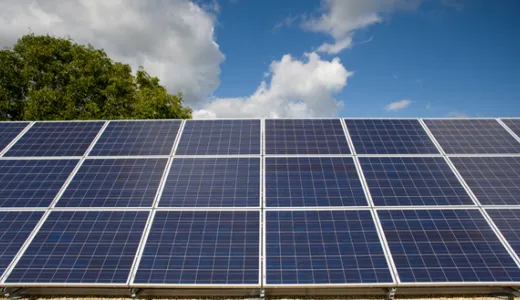What are the different types of renewable energy?
With the UK and US aiming to reach net zero by 2050, using electricity that comes from renewable sources is essential to help reduce our carbon emissions.
Each type of renewable energy contributes different amounts to our electricity mix, alongside non-renewable energy types such as fossil fuels or nuclear energy.
Find out about the different types of renewable energy sources that we currently use for electricity and how they’ll be used in the future to help further tackle climate change.
What is renewable energy?
Renewable energy is energy that comes from a source that won’t run out. They are natural and self-replenishing, and usually have a low- or zero-carbon footprint.
Examples of renewable energy sources include wind power, solar power, bioenergy (organic matter burned as a fuel) and hydroelectric, including tidal energy.
Burning fossil fuels to create electricity has long been a major contributor in the emission of greenhouse gases into our atmosphere, so these renewable sources are considered vital in the race to tackle climate change.
The most common renewable energy sources
There are four main sources of renewable energy used in the UK and US:
Wind

Wind power is the largest producer of renewable electricity in both the UK and the US. Onshore and offshore wind farms generate electricity by spinning the blades of wind turbines. The turbines convert the kinetic energy of the spinning blades into electric energy by turning a drive shaft and gear box, which is connected to a generator. Electricity is then converted into higher voltages and fed into the national grid.
Solar
Sunlight is one of the planet’s most freely available energy resources, which you’d assume would make it the number one source of renewable energy. But of course, the amount of sunlight we get can vary greatly depending on location, season and time of day.
Solar power generates electricity by capturing sunlight on solar panels in a joint chemical and physical reaction, known as the ‘photovoltaic effect’ (or PV).
Hydroelectric
Hydro power is created using the movement of flowing or falling water. Hydroelectric power plants are found at dams and generate electricity through underwater turbines that turn a generator. Hydro power also encompasses wave and tidal power, which rely on ocean forces to generate electricity at the mouths of large bodies of water, using similar technology.
Bioenergy
Electricity can be generated when organic matter is burned as a fuel source. These fuels are known as biomass and include anything from plants to timber to food waste. Carbon dioxide (CO2) is emitted when bioenergy is made, but these fuel sources are considered renewable because they can be regrown and absorb as much carbon as they emit across their lifespans.
What are non-renewable energy sources?
Fossil fuels, such as coal, natural gas and oil, are examples of non-renewable energy sources. These sources can occur naturally, but they are finite in their amount.
A disadvantage of non-renewable energy sources is that they often take hundreds of thousands of years to form, and have to be extracted from the earth and burned in order to create the energy that generates electricity. They also emit harmful greenhouse gases like CO2 when they’re burned.
What are the benefits of renewable energy?
There are several reasons why harnessing the power of renewable energy sources is so important for our future.
As they’re in much more plentiful supply, compared to fossil fuels, governments across the world are looking to develop renewables to exclusively power their nations.
Perhaps most importantly, renewables produce little or no harmful emissions when used, so the clean energy they provide will play a crucial role in preventing further global warming. It’s why so many of our net zero goals in the future hinge on increasing their use today.
Is renewable energy the same as clean or green energy?
The terms ‘green energy’, ‘clean energy’ and ‘renewable energy’ are often used interchangeably, but there is a key difference between them.
- Clean energy produces electricity without emissions. However, its manufacture or maintenance can sometimes have a ‘carbon cost’. For example, natural environments have to be cleared to create hydroelectric plants with a dam, and the work to construct them often creates carbon emissions.
- Green energy comes from totally natural sources, which have low or no environmental impact in their creation or use.
- They can both be renewable, which essentially means that they come from a source that can’t be depleted.
So, while most green energy sources are renewable, not all renewable energy sources are considered green.
Renewable energy in the modern era
Today, the use of renewables in our electricity mix has grown massively. At the end of 1991, renewables accounted for a mere 2% of electrical generation in the UK, while by 2013 it had risen to 14.6%.
By 2020 – Britain’s greenest year on record – renewables contributed a whopping 43.1% of the electricity mix, more than natural gas (34.5%) and coal (1.8%). Combined with low-carbon nuclear energy’s 16% contribution, a milestone was reached with the nation being largely powered by clean energy for a year.
In the US, renewable resources provided around 21% of total utility-scale electricity generation in 2023, compared with about 12% in 1990. This surpassed nuclear, coal, petroleum and other various sources and came second only to natural gas, which provided around 43%*.
Last updated: 10 May 2022
The information in this article is intended as a factual explainer and does not necessarily reflect National Grid's strategic direction or current business activities.



